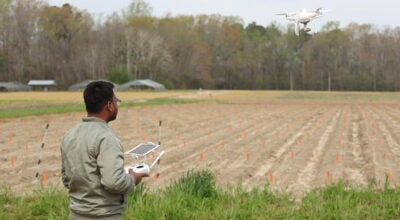Pipeline pitches Suffolk
Published 9:11 pm Thursday, November 19, 2015
Representatives of the Atlantic Coast Pipeline spent Wednesday afternoon and Thursday morning pitching Suffolk City Council and business owners, respectively, on the benefits of the proposed project.
Max Bartholomew Jr., manager of regional state and local affairs for Dominion, and George Faatz, director of external affairs for Virginia Natural Gas, presented during City Council’s work session on Wednesday and at a Hampton Roads Chamber of Commerce Suffolk and Portsmouth Division board meeting in Portsmouth on Thursday morning.
The two laid out the situation for their audiences. From 2006 to 2013, natural gas use in Virginia and North Carolina rose 75 percent. Only two pipelines currently carry natural gas into eastern Virginia; both are decades old and are at maximum capacity. During extreme cold weather last winter, Virginia Natural Gas had to curtail the gas usage of its 108 largest customers — including shipyards, military installations and large industrial plants — in order to keep heat in homes and small businesses.
“That’s happened the last few winters in a row,” Faatz said Wednesday.
The situation is a danger for economic development, said Dean McClain, director of municipal affairs for the Chamber of Commerce.
“Right now, we can’t check that box and say that we have gas,” McClain said of dealing with a potential industrial client.
The 564-mile project is planned to run from Harrison County, W.Va., to Robeson County, N.C., with a spur coming east from the Virginia/North Carolina state line to Chesapeake and running through Suffolk on the way.
The sources of the gas are the Marcellus and Utica shale deposits, which are located in parts of Pennsylvania, West Virginia, Ohio and New York. A separate project will get the natural gas from the deposits to the beginning of the Atlantic Coast Pipeline in Harrison County.
Bartholomew described several re-routings the project has undertaken since its initially proposed route.
“If you look at the efforts we’ve made to do the re-routing, it’s been very substantial,” he said.
One large re-routing took place in Suffolk to avoid the Great Dismal Swamp National Wildlife Refuge. It now runs north of downtown and crosses under the Western Branch Reservoir.
“We have met with the city of Norfolk, understanding that they own the reservoir,” Bartholomew said. He said Norfolk had not expressed any concerns.
Bartholomew added that 81.4 percent of affected property owners in Suffolk have given access to surveyors. No land has yet been taken by eminent domain, he added.
The project is set to be completed and in service by 2018, although Bartholomew admitted Thursday that might be a little too aggressive.
Faatz said Thursday that the project will bring greater reliability and price stability to the natural gas supply.
A couple of business owners at Thursday’s meeting questioned how small businesses could bid on portions of the construction project. Bartholomew said the work would most likely be done by an international firm but said he would get more information to those business owners about how they can get involved.
“We are going to work toward any local employers we can acquire,” he said.






